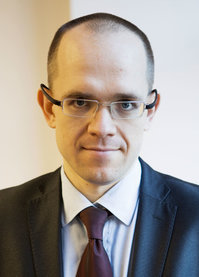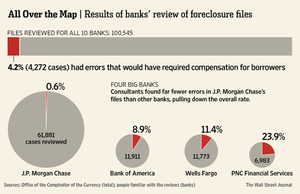Ms. Yang Jing, 28, is one of China's premier love hunters, a new breed of matchmaker that has proliferated in the country's economic boom. The company she works for, Diamond Love and Marriage, caters to China's nouveaux riches: men, and occasionally women, willing to pay tens and even hundreds of thousands of dollars to outsource the search for their ideal spouse.

In Joy City, Ms. Yang gave instructions to her eight-scout team, one of six squads the company was deploying in three cities for one Shanghai millionaire. This client had provided a list of requirements for his future wife, including her age (22 to 26), skin color ("white as porcelain") and sexual history (yes, a virgin).
"These millionaires are very picky, you know?" Ms. Yang said. "Nobody can ever be perfect enough." Still, the potential reward for Ms. Yang is huge: The love hunter who finds the client's eventual choice will receive a bonus of more than $30,000, around five times the average annual salary in this line of work.
In one case, Ms. Yu's migrant son reluctantly agreed to allow his aging mother to make the search for his future wife her all-consuming mission. In the other, Ms. Yang's richest client at Diamond Love deployed dozens of love hunters to find the most exquisite fair-skinned beauty in the land, even as he fretted about being conned by a bai jin nu, or gold digger.
Mr. Big, as I'll call him -- he insisted that Diamond Love not reveal his name -- is a member of China's fuyidai, the "first-generation rich" who have leapt from poverty to extreme wealth in a single bound, often jettisoning their first wives in the process. Diamond Love's clientele also includes many fuerdai, or "second-generation-rich," men and women in their 20s and 30s whose search is often bankrolled by wealthy parents keen on exerting control over their marital choices as well as the family inheritance.
But fuyidai like Mr. Big are accustomed to being the boss and can be the most uncompromising clients.
Mr. Big had an excruciatingly specific requirement for his second wife. The ideal woman, he said, would look like a younger replica of Zhou Tao, a famous Chinese television host: slim with pure white skin, slightly pointed chin, perfect teeth, double eyelids and long silken hair. To ensure her good character and fortune, he insisted that her wuguan -- a feng shui-like reading of the sense organs on the face -- show perfect harmony.
"When clients start out, all they want is beauty -- how tall, how white, how thin," Ms. Yang said. "Sometimes the person they're looking for doesn't exist in nature. Even if we find her, these clients often have no idea whether that would make their hearts feel settled. It's our job to try to move them from fantasy toward reality."
The New Matchmaking
Three decades of combustive economic growth have reshaped the landscape of marriage in China. A generation ago, China was one of the world's most equal nations, in both gender and wealth. Most people were poor, and tight controls over housing, employment, travel and family life simplified the search for a suitable match -- what the Chinese call mendang hudui, meaning roughly "family doors of equal size."
Like many Chinese who came of age in the 1960s and '70s, Ms. Yu married a man from her factory work unit, with their local Communist Party boss as informal matchmaker. As recently as 1990, researchers found that a vast majority of residents in two of China's largest cities dated just one person before marriage: their prospective spouse.
China's transition to a market economy has swept away many restrictions in people's lives. But of all the new freedoms the Chinese enjoy today -- making money, owning a house, choosing a career -- there is one that has become an unexpected burden: seeking a spouse. This may be a time of sexual and romantic liberation in China, but the solemn task of finding a husband or wife is proving to be a vexing proposition for rich and poor alike.
"The old family and social networks that people used to rely on for finding a husband or wife have fallen apart," said James Farrer, an American sociologist whose book, "Opening Up," looks at sex, dating and marriage in contemporary China. "There's a huge sense of dislocation in China, and young people don't know where to turn."
The confusion surrounding marriage in China reflects a country in frenzied transition. Sharp inequalities of wealth have created new fault lines in society, while the largest rural-to-urban migration in history has blurred many of the old ones. As many as 300 million rural Chinese have moved to cities in the last three decades. Uprooted and without nearby relatives to help arrange meetings with potential partners, these migrants are often lost in the swell of the big city.
Demographic changes, too, are creating complications. Not only are many more Chinese women postponing marriage to pursue careers, but China's gender gap -- 118 boys are born for every 100 girls -- has become one of the world's widest, fueled in large part by the government's restrictive one-child policy. By the end of this decade, Chinese researchers estimate, the country will have a surplus of 24 million unmarried men.
Single men have a hard time making the list if they don't own a house or an apartment, which in cities like Beijing are extremely expensive. And despite the gender imbalance, Chinese women face intense pressure to be married before the age of 28, lest they be rejected and stigmatized as "leftover women."
Dozens of high-end matchmaking services have sprung up in China in the last five years, charging big fees to find and to vet prospective spouses for wealthy clients. Their methods can turn into gaudy spectacle. One firm transported 200 would-be trophy wives to a resort town in southwestern China for the perusal of one powerful magnate. Another organized a caravan of BMWs for rich businessmen to find young wives in Sichuan Province. Diamond Love, among the largest love-hunting services, sponsored a matchmaking event in 2009 where 21 men each paid a $15,000 entrance fee.
The marriage candidates on offer in the parks, she discovered, were often a mismatch of shengnu ("leftover women") and shengnan ("leftover men"), two groups from opposite ends of the social scale. Shengnan, like her son, are mostly poor rural men left behind as female counterparts marry up in age and social status. The phenomenon is exacerbated by China's warped demographics, as the bubble of excess men starts to reach marrying age.
Finding a Chinese spouse can be even more challenging for so-called leftover women, even if they often have precisely what the shengnan lack: money, education and social and professional standing. One day in the Temple of Heaven park, I met a 70-year-old pensioner from Anhui Province who was seeking a husband for his eldest daughter, a 36-year-old economics professor in Beijing.
"My daughter is an outstanding girl," he said, pulling from his satchel an academic book she had published. "She's been introduced to about 15 men over the past two years, but they all rejected her because her degree is too high."



